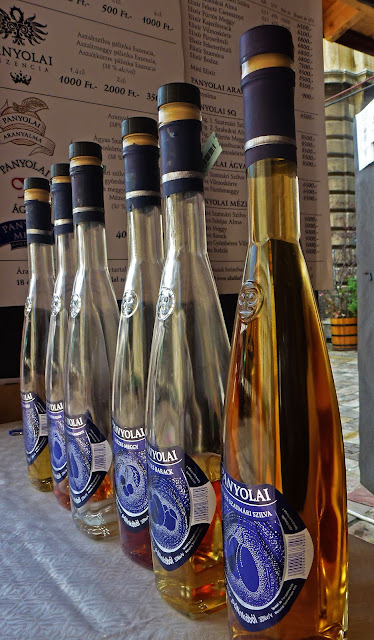If a plant growing in our area gives some sort of fruit, rest assured that the Hungarians will take it upon themselves to make pálinka out of it. The well established stars are of course plum, apricot and pear but a thorough search will uncover wonders such as onion and paprika pálinka. For something to be called pálinka it has to comply to several guidelines (the European Union kindly made sure that nations in Central Europe will kick some dust around who can make what kind of alcohol out of which fruit and how- the final outcome is blurry, to say the least).So pálinka must be at least 37.5 degrees strong and must be made of 100% fruit, no added sugar or other colour or taste enhancing substances.Thus one of the local favourites- honey flavoured pálinka, has to be officially marketed as likőr. All this theory becomes somewhat pointless when faced with the onslaught of choice at one of the two yearly Pálinka Festivals held in the Buda castle- one in spring and one in autumn, the second tends to be bigger as manufacturers bring their new products for a first introduction and the chillier weather provides a better backdrop for intense consumption. The spring festival has such delights as a plum pálinka-maracuja juice slushy- I have a feeling that our elders would feel a tad insulted at the thought, but sadly no one asked them. As a well-versed expert I might add that you should not miss out on the Panyolai pálinkas, they have an excellent szatmári szilvapálinka (plum pálinka from the Szatmár area, one of the eight protected pálinka producing regions in Hungary) and several exciting honey-weird fruit mixtures. For those tending to be less enamoured with alcohol, the festival provides several types of rather hearty Hungarian dishes and sweets including handmade chocolate and macarons, out of all things. Also, the above mentioned slushy can come without the added spirit- but that would be missing out on half the fun, after all.






No comments:
Post a Comment